At NAOE, Passion for Sushi Is a Family Affair
Japanese chef Kevin Cory, whose motto is ‘it's not fresh, it's alive’, learnt the basics of cooking from his uncle.
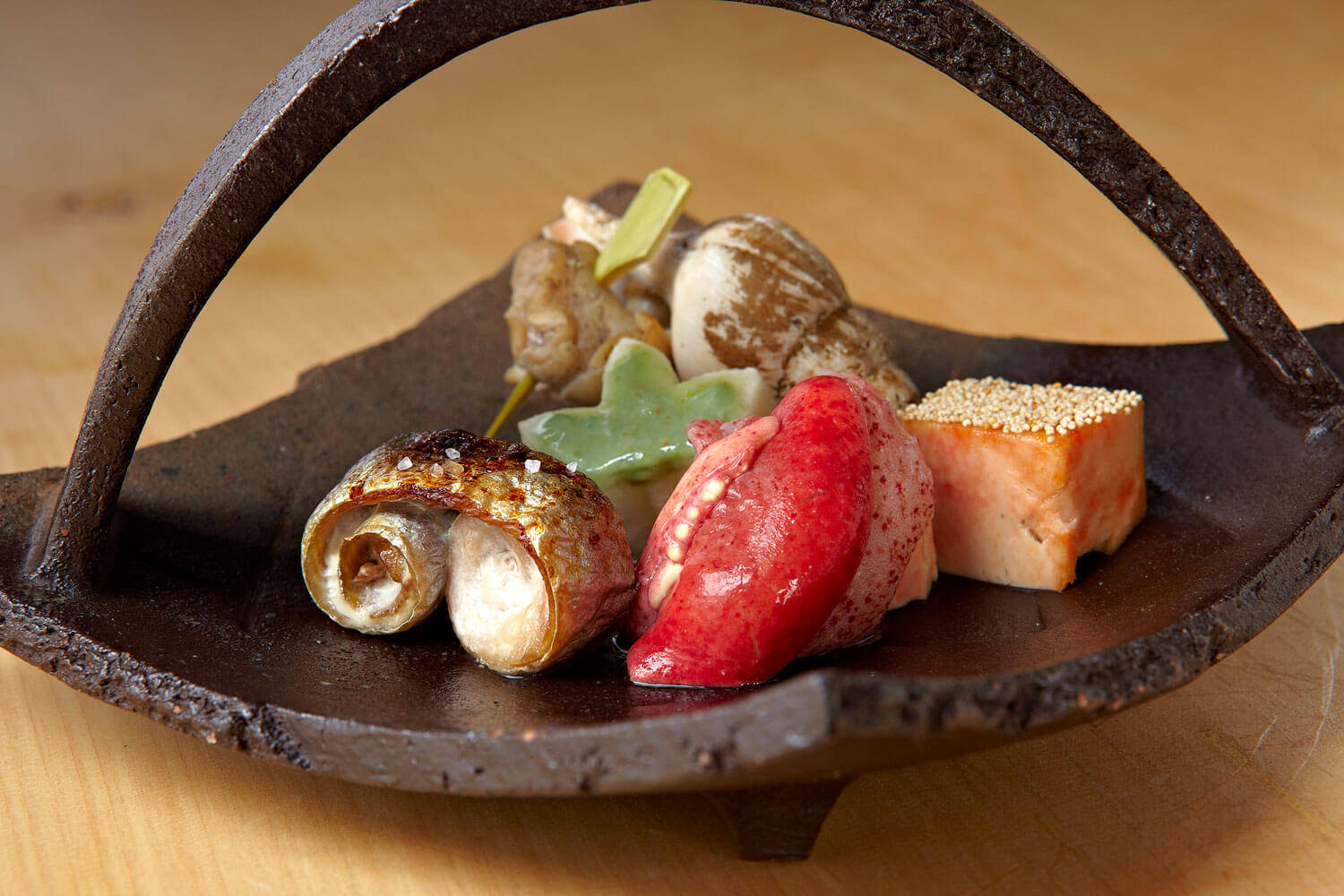
© Jeffery Salter
The restaurant NAOE, run by Kevin Cory in the heart of Miami, is an establishment known worldwide for being one of the best of its kind: an intimate restaurant that seats just a handful of diners. At NAOE, only twelve people can sit around the wooden counter.
Kevin Cory’s career is intimately linked to his family history, and more specifically to his relationship to his uncle, Yasushi Naoe, also a chef. It was by his side, from Toyama to Japan, that he honed his technique and learnt to enhance ingredients and their cooking methods. Upon his return to the US in 2005, he named his restaurant NAOE in homage to his uncle. His family also run a factory that makes sake and soy sauce, products that are of course found in his restaurant.
A menu at the chef’s discretion
On his omakase menu (which translates as ‘I leave it to you’), the chef often includes a special bento box made up of egg cream with a layer of uni, sweet potato and daikon (white radish).
However, it is over the subsequent courses that the real star ingredients appear: lobster, monkfish and Japanese sandfish, similar to perch.
More information on NAOE can be found on the restaurant’s website.
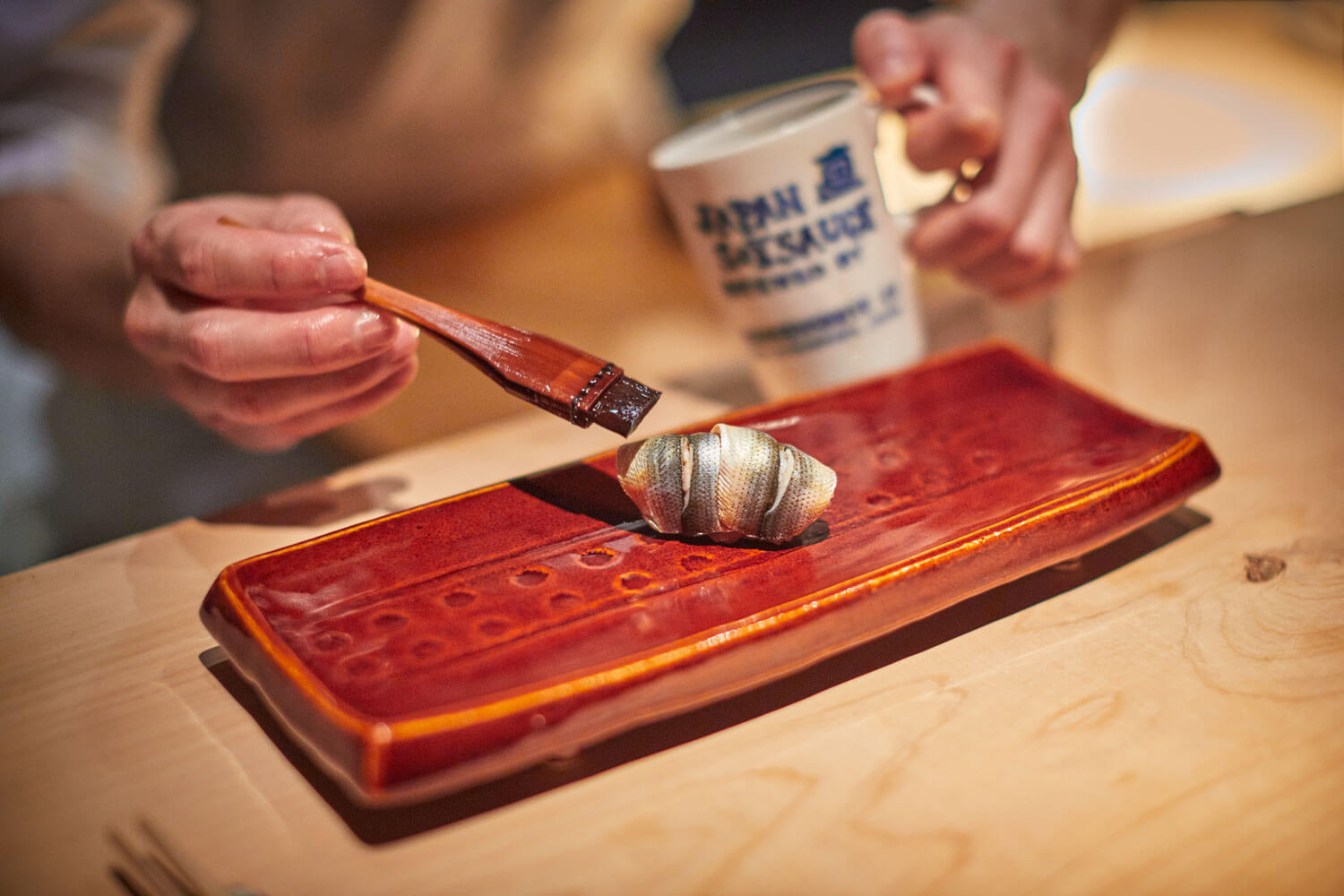
© Jeffery Salter
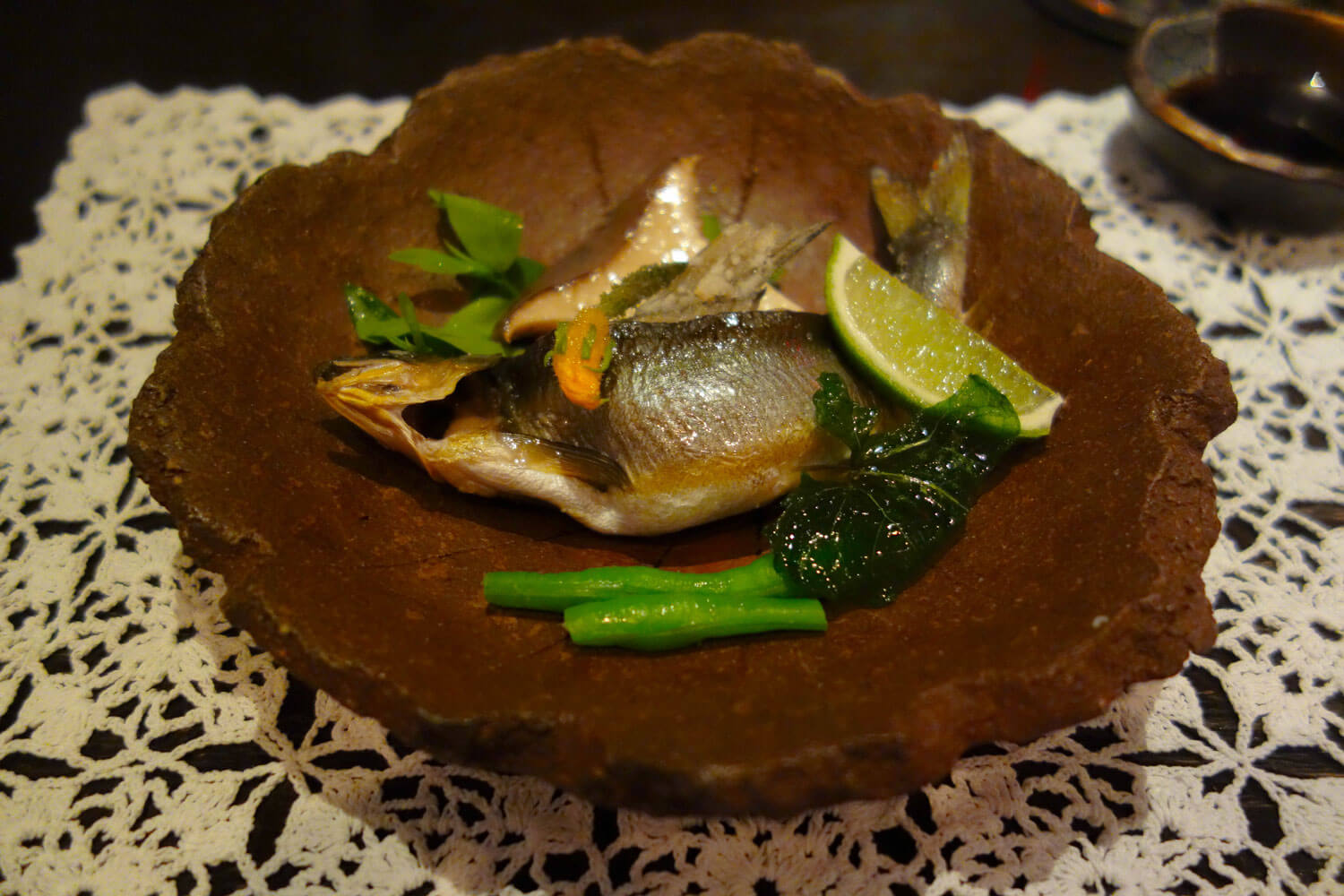
© Javier Ramirez
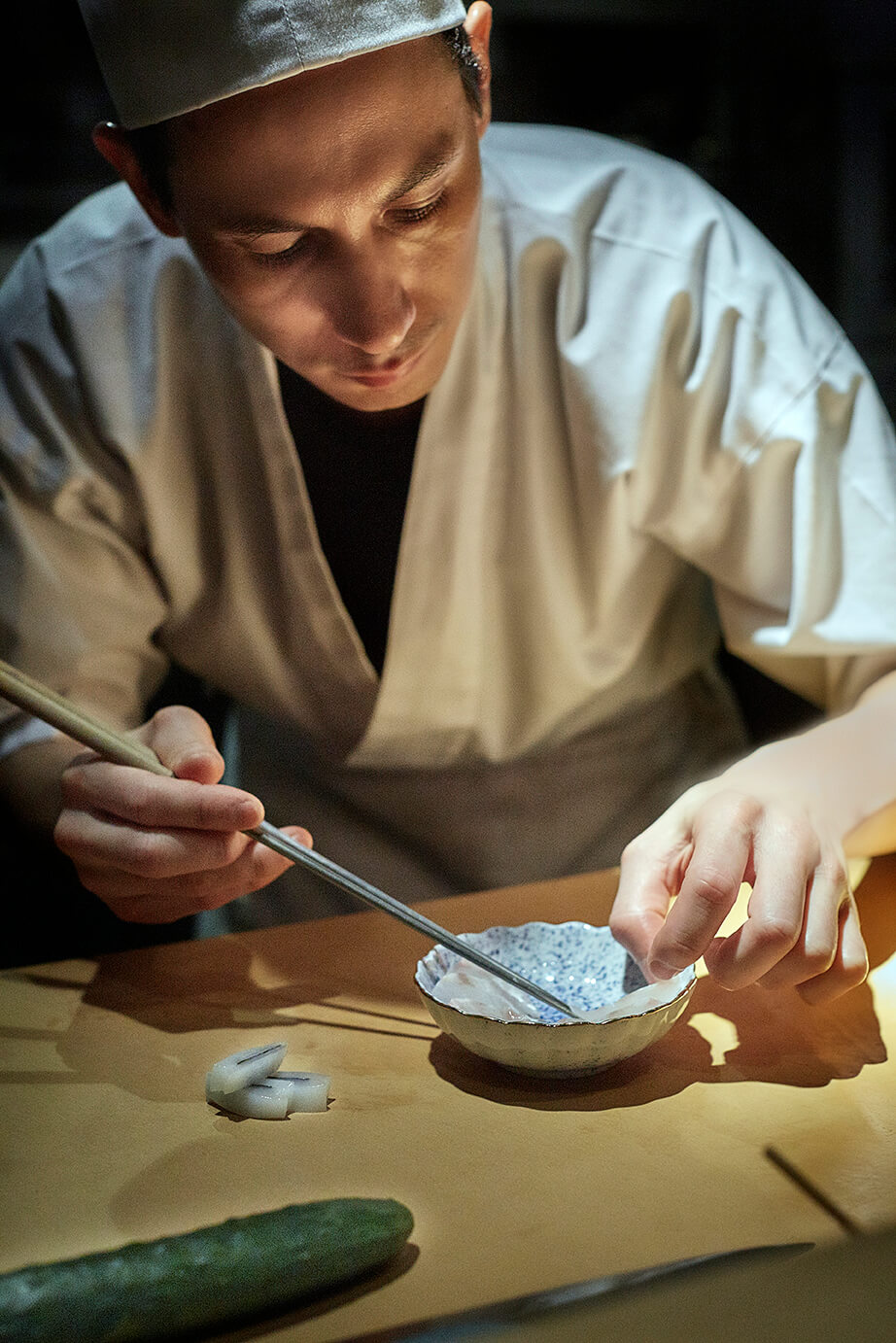
© Jeffery Salter
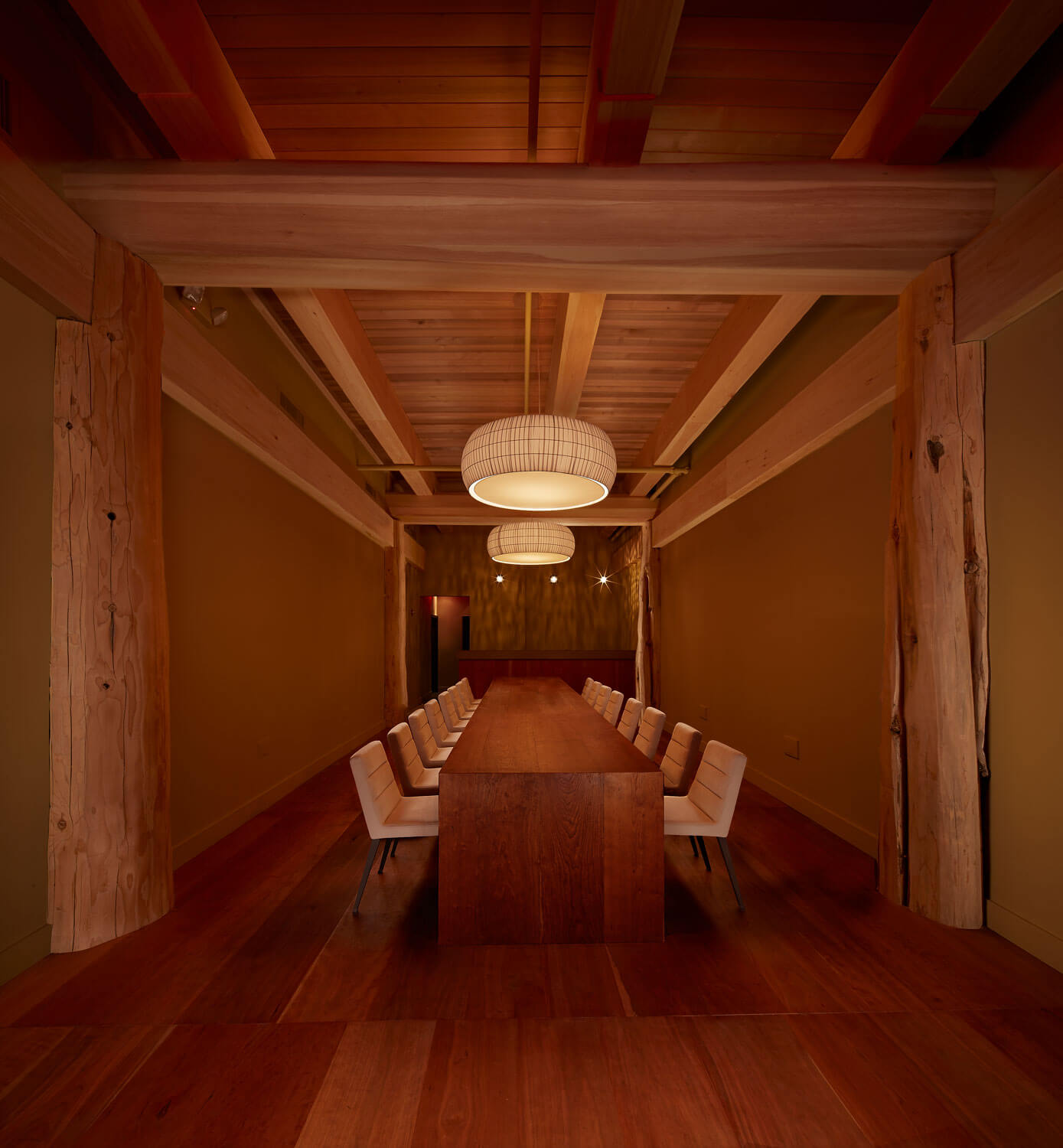
© Jeffery Salter
TRENDING
-
The Tattoos that Marked the Criminals of the Edo Period
Traditional tattoos were strong signifiers; murderers had head tattoos, while theft might result in an arm tattoo.

-
Paris, Tokyo: Robert Compagnon
With his co-chef and talented wife, Jessica Yang, Robert Compagnon opened one of the top new restaurants in Paris: Le Rigmarole.
 3:31
3:31 -
Chiharu Shiota, Red Threads of the Soul
Last year, more than 660,000 people visited the retrospective 'Chiharu Shiota: The Soul Trembles' exhibit at the Mori Art Museum.

-
‘Before Doubting Others, Doubt Yourself. Who Can Truly Say a Dish Isn’t What It Used to Be?’
In ‘A Non-Conformist’s Guide to Surviving Society’, author Satoshi Ogawa shares his strategies for navigating everyday life.

-
The Story of Sada Yacco, the Geisha who Bewitched Europe
Described by Dazed magazine as the first beauty influencer, she has been restored to her former glory since 2019.





